Clans are an intrinsic part of Scotland’s heritage and a fascinating element of Scottish culture.
On a trip to Scotland, you could uncover the legacy of Scottish clans for an interesting insight into the country's history. There are so many monuments, castles and significant clan sites for you to explore in Scotland.
- Start planning your journey through Scotland: explore our privately guided and self-drive tours
Now, come with us on a journey through the events that shaped Scottish history, such as the Jacobite rebellions and the Highland Clearances.
In the aftermath of these defining cultural moments, thousands of clan members migrated to destinations across the New World, like America, Canada and Australia. As a result, clan descendants have spread far and wide. You might be one of them.
Perhaps, like many of our private tour customers, you'd love to explore your own family history when you visit Scotland. To prepare for your trip, we've put together a basic introduction to Scottish ancestry.
We answer questions you might have, give a little history on some of the prominent Scottish clans, and highlight our pick of top historical sites you can explore on your tour of Scotland.
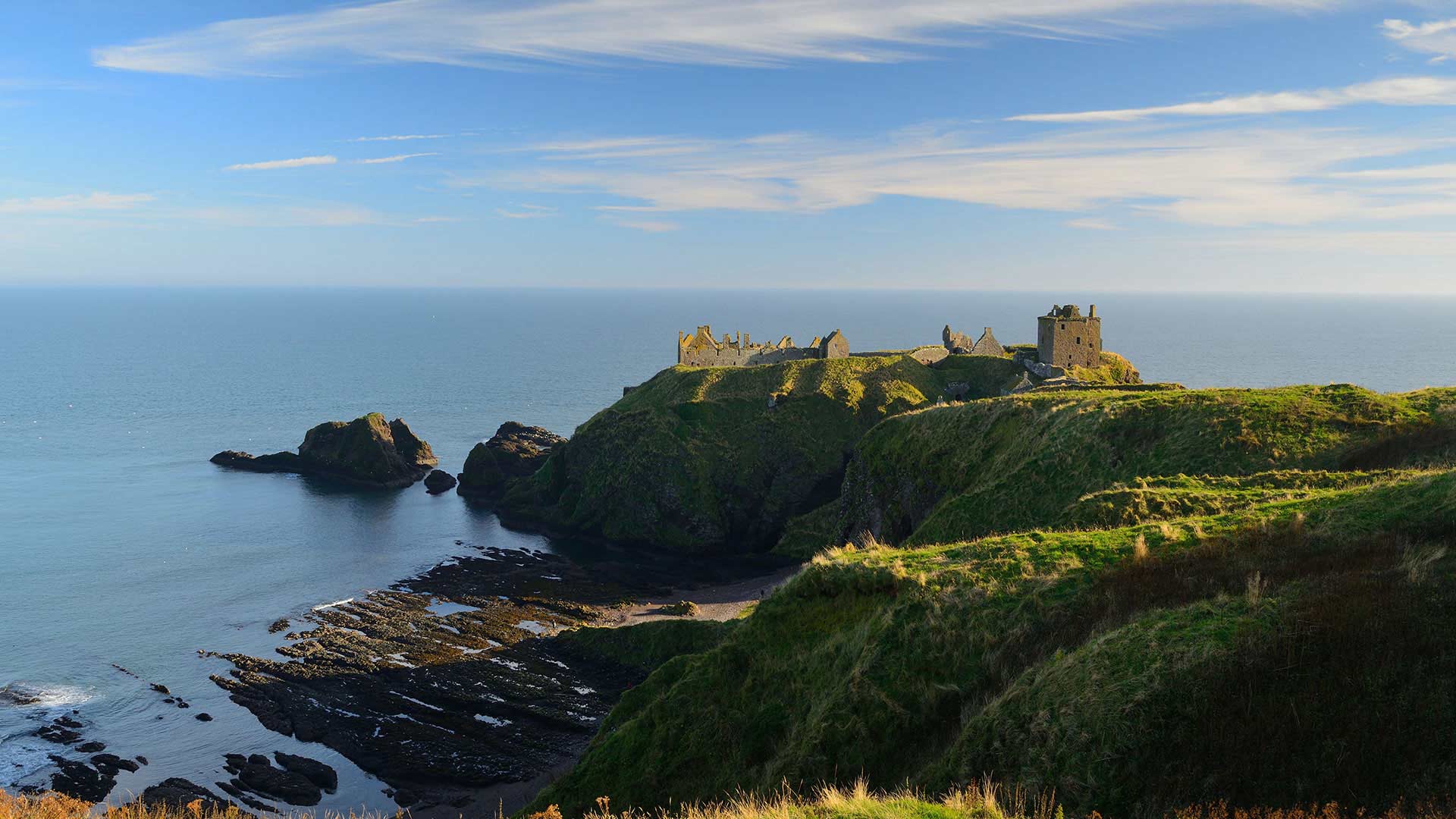
Contents:
- What is a Scottish clan?
- How many clans of Scotland are there?
- Where do clan names come from?
- What is the largest clan in Scotland?
- What is the oldest clan in Scotland?
- Are there any clans left in Scotland?
- Why did Scots wear kilts?
- Why was the kilt banned in Scotland?
- How can you find out more about Scottish ancestry?
What is a Scottish clan?
Clans are essentially kinship groups amongst Scottish people. They share a sense of identity, history, and of course, clan tartans.
The word “clan” is derived from the Scottish Gaelic word “clann”, which can roughly be translated as “‘children” or “kindred.”
Clan members also, traditionally, lived within the same area and sometimes had an ancestral castle where they’d hold social events.
Within the clan system, each clan has a chief or leader. To this day, there are still clan chiefs that head up the family.
For centuries, clans formed the backbone of Scotland’s political system, until the defeat of the Scots at the Battle of Culloden in 1746. This major clash between the British and Jacobites (Scottish rebels) marked the beginning of the end for Highland life and clan culture.
How many clans of Scotland are there?
Scotland has approximately 500 clans with members from across the world. Many clans still hold gatherings and social events to continue their traditions.
Where do clan names come from?
In terms of the origins of clan names, most are believed to be anglicised forms of Gaelic, French, Norman, and other languages. For example, the name “MacPherson” derives from “Mac a’ Phearsain” in Gaelic, which translates to “Son of the Parson”.
Clan members weren’t necessarily direct descendants of the chieftain. Many of them would’ve been invited to join the clan, in order to gain protection or forge an alliance. These families are known as “septs”.
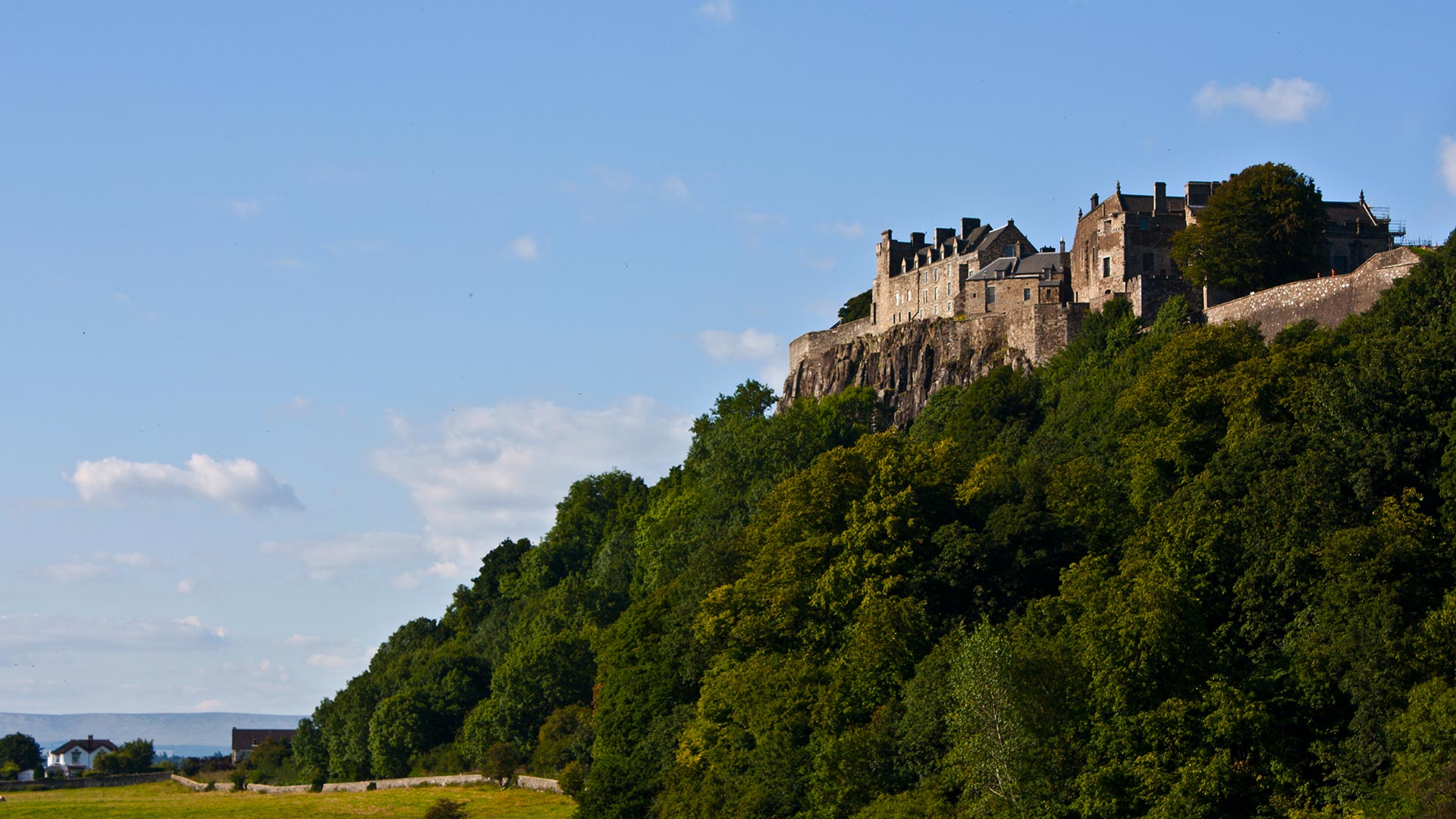
What is the largest clan in Scotland?
Clan MacDonald of Clanranald is one of the biggest Highland clans. Descendants of Ranald, son of John, Lord of the Isles, the MacDonalds controlled most of Scotland’s northwest coast. They played a powerful role in Scottish history, fighting alongside Robert the Bruce during the Wars of Scottish Independence.
What is the oldest clan in Scotland?
Clan Donnachaidh, also known as Clan Robertson, is one of the oldest clans in Scotland with an ancestry dating back to the Royal House of Atholl. Members of this House held the Scottish throne during the 11th and 12th centuries.
Are there any clans left in Scotland?
Many clans continue to exist today in Scotland and around the world. Clan surnames have spread beyond Scotland’s borders and there are various events whereby members get together to celebrate their heritage.
Why did Scots wear kilts?
The original “great” kilt was quite different to the modern one you see today. Scottish kilts first emerged in the 16th century, fashioned from a long piece of tartan which was draped around the waist and over the head and shoulders.
The great kilt was a versatile garment that could be worn as a cloak and hood to help protect Scots from the cold.
From the turn of the 18th century, the shorter, knee-length kilt became popular. Then, a hundred years or so later, Scottish clans started to incorporate tartans of colours and patterns unique to them. This served to distinguish one clan from another.
In 1822, Sir Walter Scott arranged for King George IV to wear a short walking kilt on his royal visit to Scotland. This made the garment incredibly popular.
- Related: Cool facts about Scotland
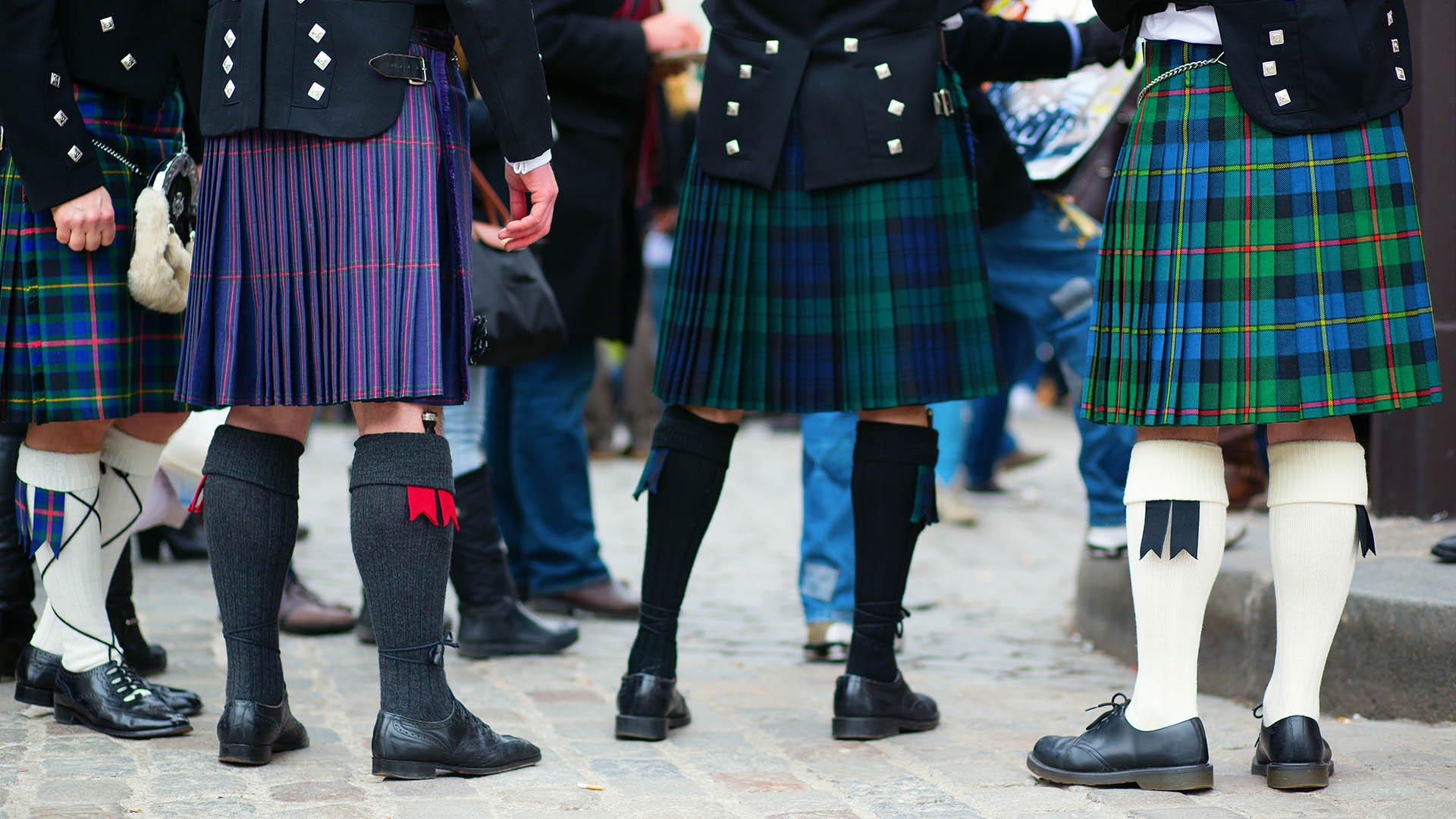
Why was the kilt banned in Scotland?
Following the failed Jacobite Risings from 1689 to 1746, the English Crown banned the kilt with the Dress Act of 1746. The Dress Act was part of a wider series of reforms which sought to bring warring Scottish clans under government control.
Kilts were banned until 1782 and by this time they were no longer part of everyday dress in the Highlands.
How can you find out more about Scottish ancestry?
If you have Scottish roots, you might be curious to know which clan you are part of. You can discover which clan you are related to using the handy Sept and Clans search function found on ScotClans.
Once you find your clan, you can research documents related to the births, marriages and deaths in your family using regional parish registers.
ScotClans is also a great source if you want to learn more about Scottish clan history. Then, when you're ready to visit Scotland, Nordic Visitor's travel experts will plan a personalised tour for you, so you can explore your Scottish roots.
Good to know: Our Scotland consultants are experts when it comes to all things travel related. They will be delighted to plan a tour of Scotland for you that incorporates the historical attractions you want to experience.
If you'd like to find out about your Scottish ancestry, we recommend that you speak to a genealogy expert who will be best placed to help you with that. Here are some suggestions:
- Delve into Scottish history on a Scotland heritage tour
The clans of Scotland
There are hundreds of Scottish clans, each of which has its own unique story and origins. Here are 10 well-known clans of Scotland, their mottos, and a little of their history.
1. Clan Campbell
Motto: “Forget Not”
Clan Campbell was one of the largest and most powerful clans in the Highlands. Based primarily in Argyll, Clan Campbell’s chiefs eventually became the Dukes of Argyll. They were allies of the British government and led armies during the fight against the Jacobites in the first part of the 18th century.
Over the following years, many of the Dukes of Argyll held prominent positions. For example, George Campbell, the 8th Duke of Argyll, served as the British Cabinet Minister in the 19th century. His heir, Lord Lorne, married Queen Victoria’s daughter and became the Governor General of Canada.
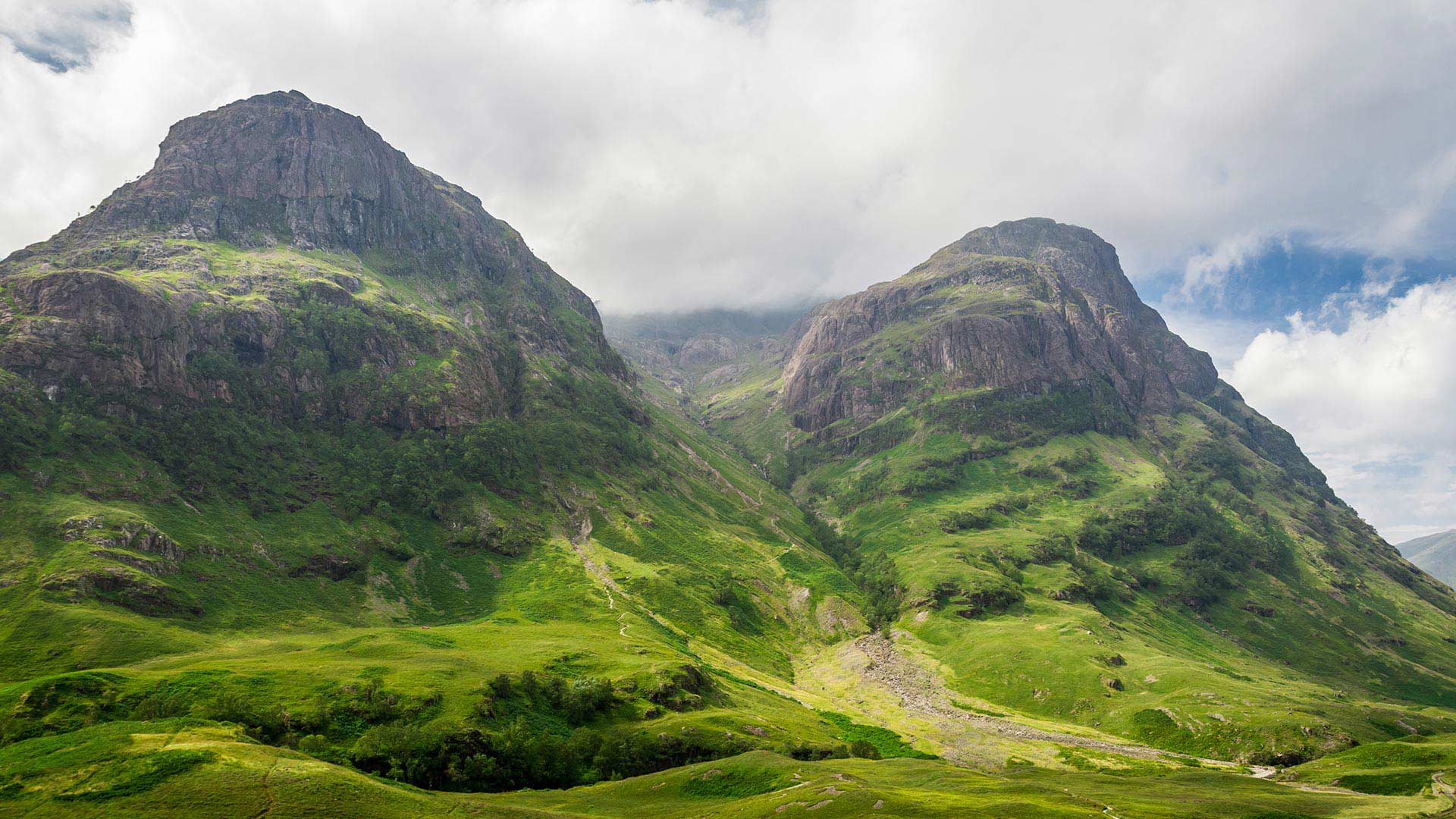
2. Clan MacDonald
Motto: “By Sea and By Land”
The MacDonalds lived around Glencoe and were one of the largest Highland clans. They owned much land in the west coast, which is why the clan chief was named “Lord of the Isles”.
Tragically, some members of the MacDonald clan were brutally murdered during the Massacre of Glencoe, on 13th February 1692.
The Campbells, supporters of the British King, were ordered to attack the MacDonalds in their own homes because they were enemies of the crown. This event was so shocking that it's still well-known in Scotland today. It even inspired the famous “Red Wedding” scene in series 3 of Game of Thrones.
Years later, the MacDonald clan fought for the Jacobites at the Battle of Culloden in 1745.
3. Clan MacLeod
Motto: “Hold Fast”
Discover the history of Clan MacLeod on the Isle of Skye, their ancestral home. Clan MacLeod are descended from the Norse Kings of the 13th century. In 1265, Leod – the son of Olaf the Black – took over parts of Skye as well as Lewis and Harris.
Dunvegan Castle has served as the seat of Clan MacLeod for 800 years. As such, it is the oldest continuously inhabited castle in Scotland.
- Browse these Scottish castle tours
- Related: Isle of Skye – Top things to see & do
4. Clan Sinclair
Motto: “Commit Thy Work to God”
The Sinclairs, who came from Saint-Clair-sur-Epte in Normandy, held land in Caithness, the Orkney Islands and Lowlands of the Lothians. It is believed that Clan Sinclair came to Scotland during the Norman Conquest of the 11th century.
Clan Sinclair played a significant role in the Scottish-Norwegian War and Scottish War of Independence. What’s more, William Sinclair was responsible for the construction of the beautiful Rosslyn Chapel, located outside Edinburgh.
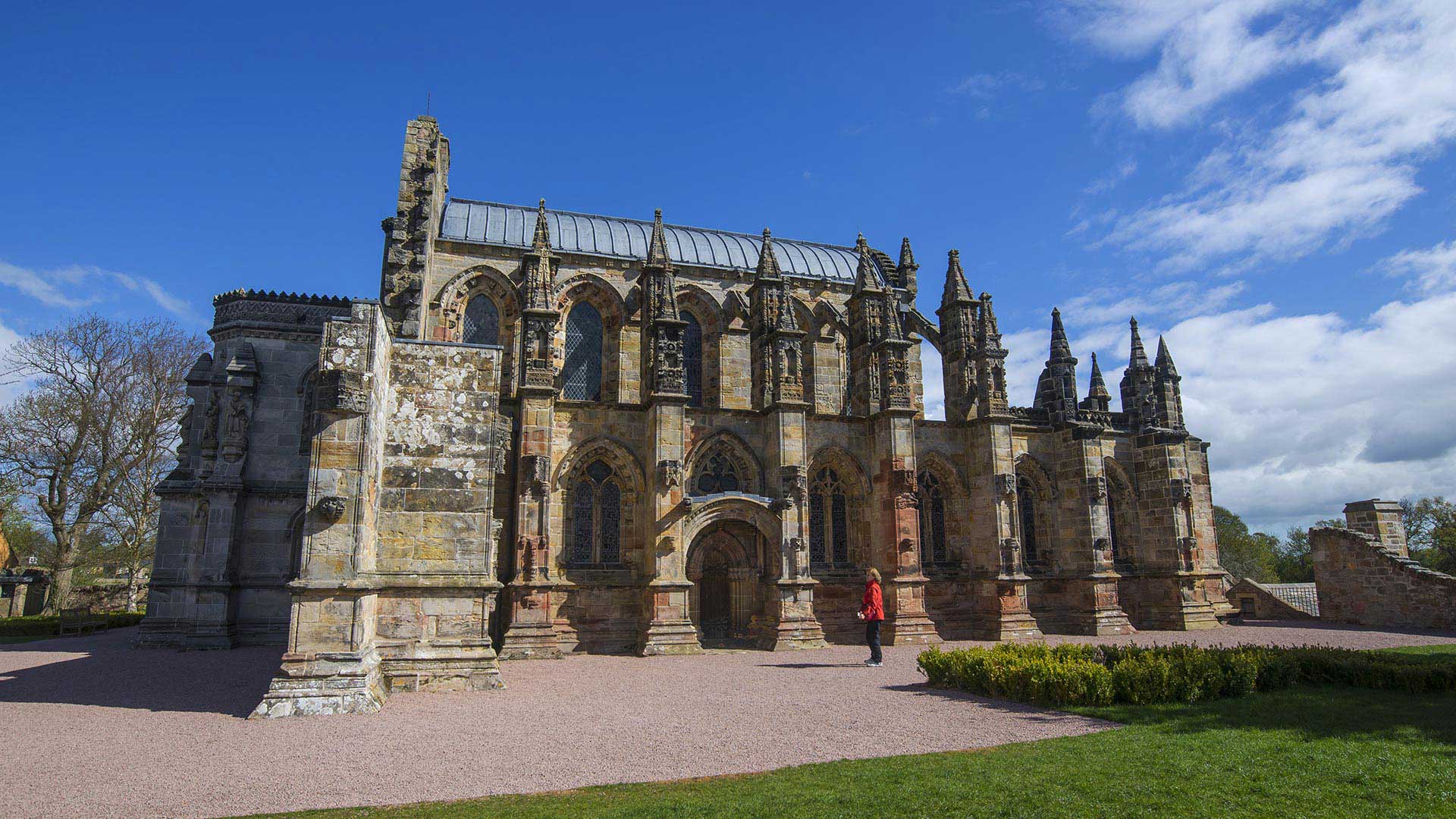
5. Clan Mackintosh
Motto: “Touch Not the Cat Without a Glove”
Originating from the area around Inverness, Clan Mackintosh evolved out of Clan MacDuff in the 12th century under the leadership of Shaw MacDuff. The Mackintoshes were ardent supporters of the Jacobite cause. Many of them were taken to North America after the failed rebellion of 1715.
Then, in the absence of the clan chief, Lady Anne Mackintosh gathered an army of 400 men to fight in the final uprising of 1745, the Battle of Culloden. It is said that Mackintosh soldiers were the first to charge towards British troops.
6. Clan Mackenzie
Motto: “I Shine Not Burn”
Clan Mackenzie – “MacCoinneach” in Gaelic – is one of the most well-known clans in Scotland. Their home range included the Isle of Lewis as well as large swathes of Wester and Easter Ross. For many years, the beautiful Eilean Donan Castle was the seat of the Mackenzie clan.
The Mackenzies supported Robert the Bruce during the Scottish Wars of Independence. They were also behind the Jacobite cause until 1745, when some members of the family decided to switch sides and support the British government instead.
7. Clan Douglas
Motto: “Never Behind”
The Douglas name derives from the Gaelic word “dubhghlais” (“black water”) and their history can be traced back to the 12th century. As one of the most powerful Scottish clans, their territory extended overseas to include areas in France and Sweden.
Many notable historical figures hail from Clan Douglas. Sir William Douglas “The Hardy” fought alongside Sir William Wallace in the Scottish Wars of Independence. He died in 1298 while imprisoned in the Tower of London.
Later, his son, James Douglas would become a loyal companion of Robert the Bruce, remaining a close ally and tactician throughout the Wars of Independence. James was known respectively as “Black Douglas” or “The Good Sir James” to enemies and allies.
Come 1440, the Douglas clan are still one of the country’s most powerful. But their influence with young King James II is the envy of rival members of the royal court. So they plot to kill the Earl of Douglas and his younger brother after a meal with the King at Edinburgh Castle.
The chilling event became known as the “Black Dinner”. The Earl of Douglas was just 15 years old at the time. Like the Massacre of Glencoe, it also inspired the “Red Wedding” scene from Game of Thrones season 3.
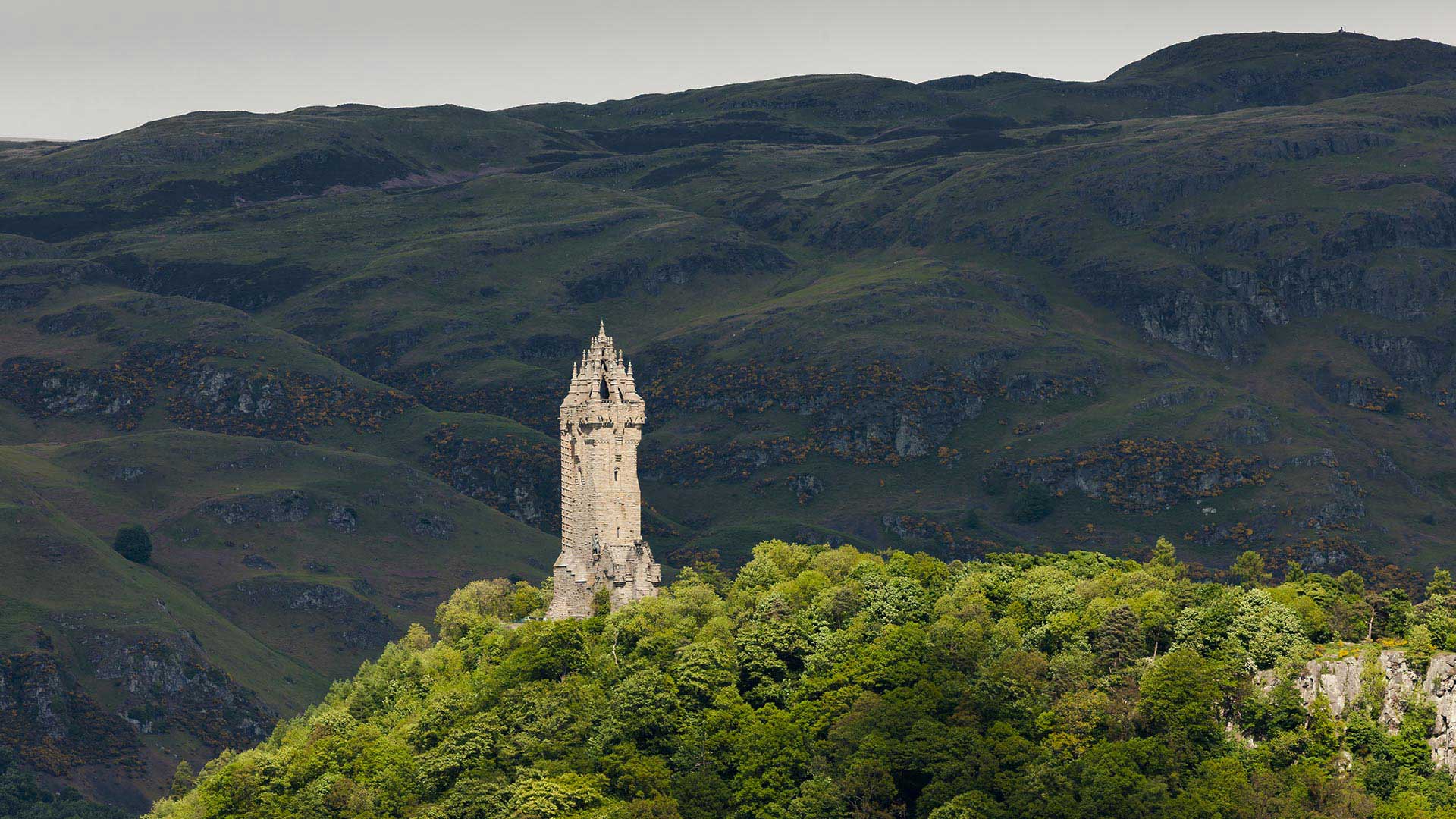
8. Clan MacLean
Motto: “Virtue Mine Honour”
Clan MacLean is one of the oldest clans in the Highlands. Many MacLean clansmen were known for their honour, courage and strength in battle.
The MacLeans owned vast stretches of land in Argyll, Isle of Mull and the Outer Hebrides. In addition to many clan skirmishes, the MacLeans also fought in the Jacobite Risings.
9. Clan MacNab
Motto: “Let Fear Be Far From All”
One of the great Highland clans, the MacNabs date back to the early 12th century. The MacNabs are strongly associated with Loch Tay and Glendochart. They held power over these lands from their castle at Eilean Ran, an island on the River Lochay.
For years the MacNabs clashed with the Neish clan over land and livestock. This rivalry culminated in the Battle of Glen Boultachan between the two clans in 1522, which saw the MacNabs defeat their enemies.
10. Clan Wallace
Motto: “For Liberty”
Clan Wallace was a lowland clan who called the area of Strathclyde, near Glasgow, home. Most people know of Clan Wallace thanks to one of Scotland’s most iconic leaders: Sir William Wallace, known as “the Hero of Scotland”.
Sir William Wallace was key in shaping Scotland’s history. He bravely fought against King Edward I of England in an attempt to keep Scotland independent.
- Uncover the history and clan heritage of Scotland on a self-drive tour
- Related: The most famous castles in Scotland
Clan sites you can visit in Scotland
Scotland is scattered with important sites relating to clan heritage. Visiting them is a fascinating way to learn more about the country’s history.
In particular, if you have Scottish ancestry, discovering some of these places on your trip to Scotland offers an enriching and moving experience.
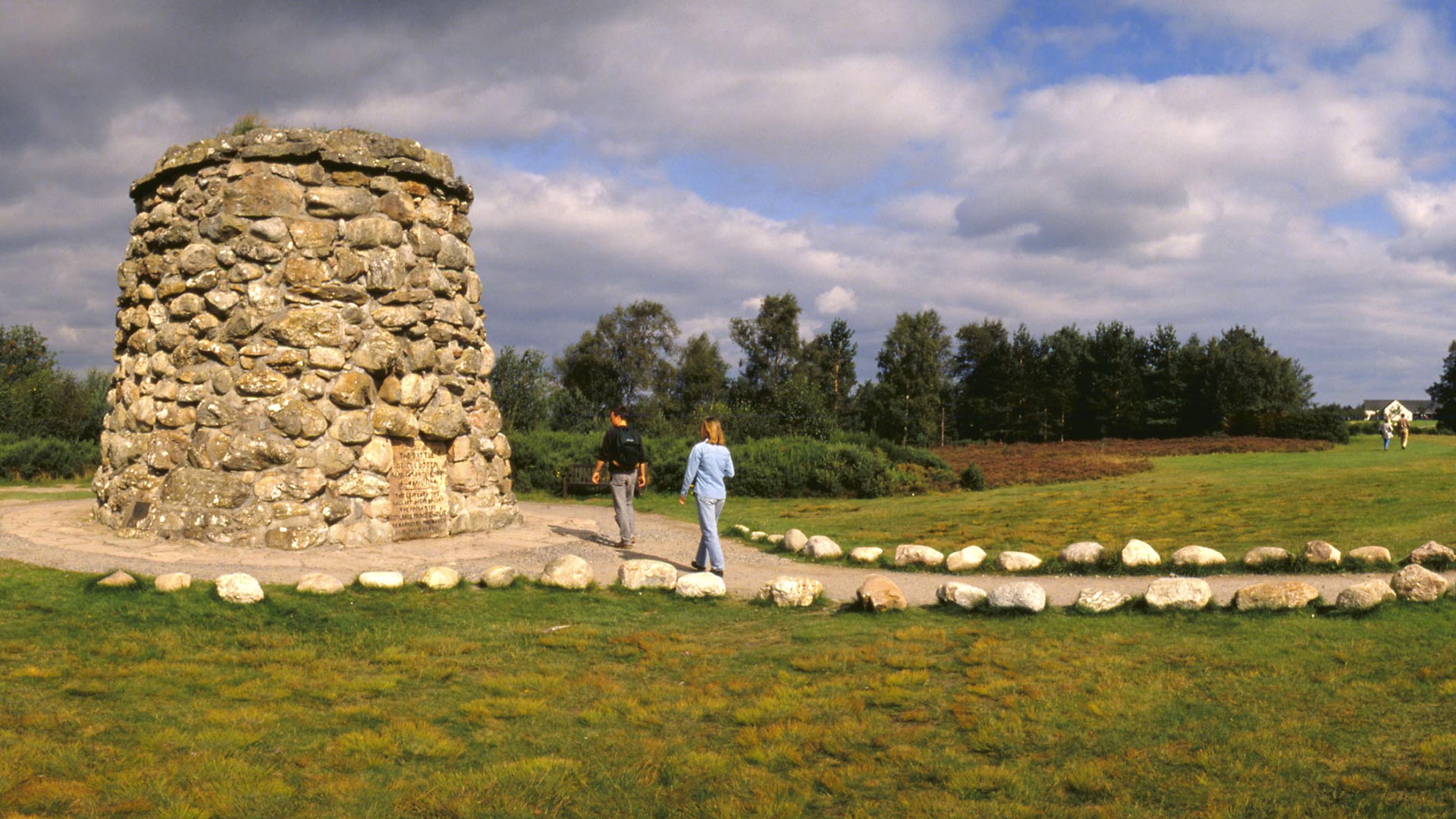
1. Culloden Battlefield – Highland Clans
The Battle of Culloden was one of the most significant turning points in Scotland’s history. This fatal clash was the culmination of the 1745 Jacobite Rising, following decades of conflict and rebellions across the Highlands.
The Jacobites were defeated by the English in one of the bloodiest battles to ever take place on British soil. A trip to the battlefield and visitor centre is a moving experience, particularly if you descend from one of the clans who fought on Culloden Moor.
2. Inveraray Castle – Clan Campbell
Step back in time at Inveraray Castle, the current seat of Clan Campbell’s chief. Inveraray Castle contains a “clan room” where you can learn more about the family’s fascinating history.
3. Cawdor Castle – Clan Campbell
Discover the legendary Cawdor Castle, with its literary ties to Shakespeare’s masterpiece, Macbeth. Cawdor Castle has been associated with the Campbells since the 16th century.
4. Finlaggan Castle – Clan MacDonald
Now lying in ruins, Finlaggan Castle, on Islay, was once the headquarters of Clan MacDonald. The former seat of the “Lords of the Isles” is found on one of three islands on Loch Finlaggan.
5. Armadale Castle – Clan MacDonald
Make a special visit to the enchanting Isle of Skye to discover the magnificent Armadale Castle. Wander through the beautiful gardens, delve into the Museum of the Isles, and read further information on the MacDonalds in the library and archives.
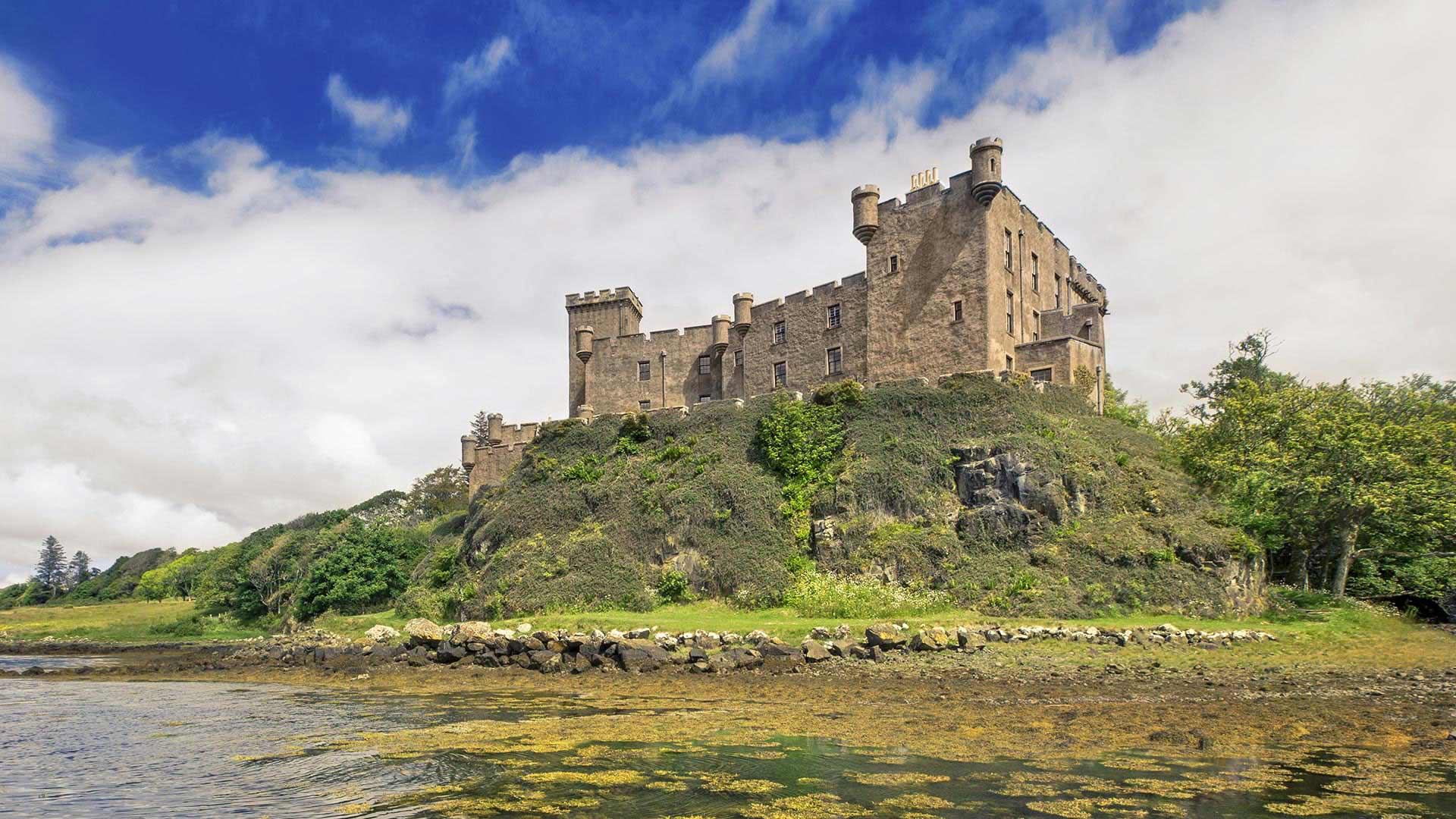
6. Isle of Skye – Clan MacLeod
Experience the history of Clan MacLeod with a visit to the Isle of Skye. As their ancestral home, the Isle of Skye is packed full of key clan sites.
During your Isle of Skye trip, make sure to check out the Bloody Stone, Dunvegan Castle with its Fairy Flag, and MacLeod’s Table.
7. The Bloody Stone – Clans MacLeod & MacDonald
The Bloody Stone is a huge rock boulder that stands beneath the craggy Cuillin Mountains, near Glen Sligachan on the Isle of Skye. It commemorates a fatal battle between the MacLeods and MacDonalds that took place in 1601.
8. Castle of Mey – Clan Sinclair
There are many Clan Sinclair castles to explore across Scotland, including the Castle of Mey, located in Caithness on the north coast of Scotland. On a clear day, you can spy the Orkney Islands across the sea.
Fans of the Netflix show The Crown will recognise the Castle of Mey, as parts of the series were filmed here. This is because, from 1952 to 1996, the Queen Mother used the castle as a royal residence.
Other properties that belonged to the Sinclairs include Castle Sinclair Girnigoe, Roslin Castle, and the beautiful Rosslyn Chapel.
9. Rait Castle – Clans Mackintosh and Comyn
Rait Castle, situated northeast of Inverness, is rumoured to be haunted by the Comyn (Cummings) clan.
For years, the Mackintoshes and Comyns both claimed ownership of the castle. According to legend, in 1442 the Comyns invited the Mackintoshes to Rait Castle to resolve this embittered feud. However, after being warned that they were about to be slaughtered, the Mackintoshes attacked their hosts during the feast.
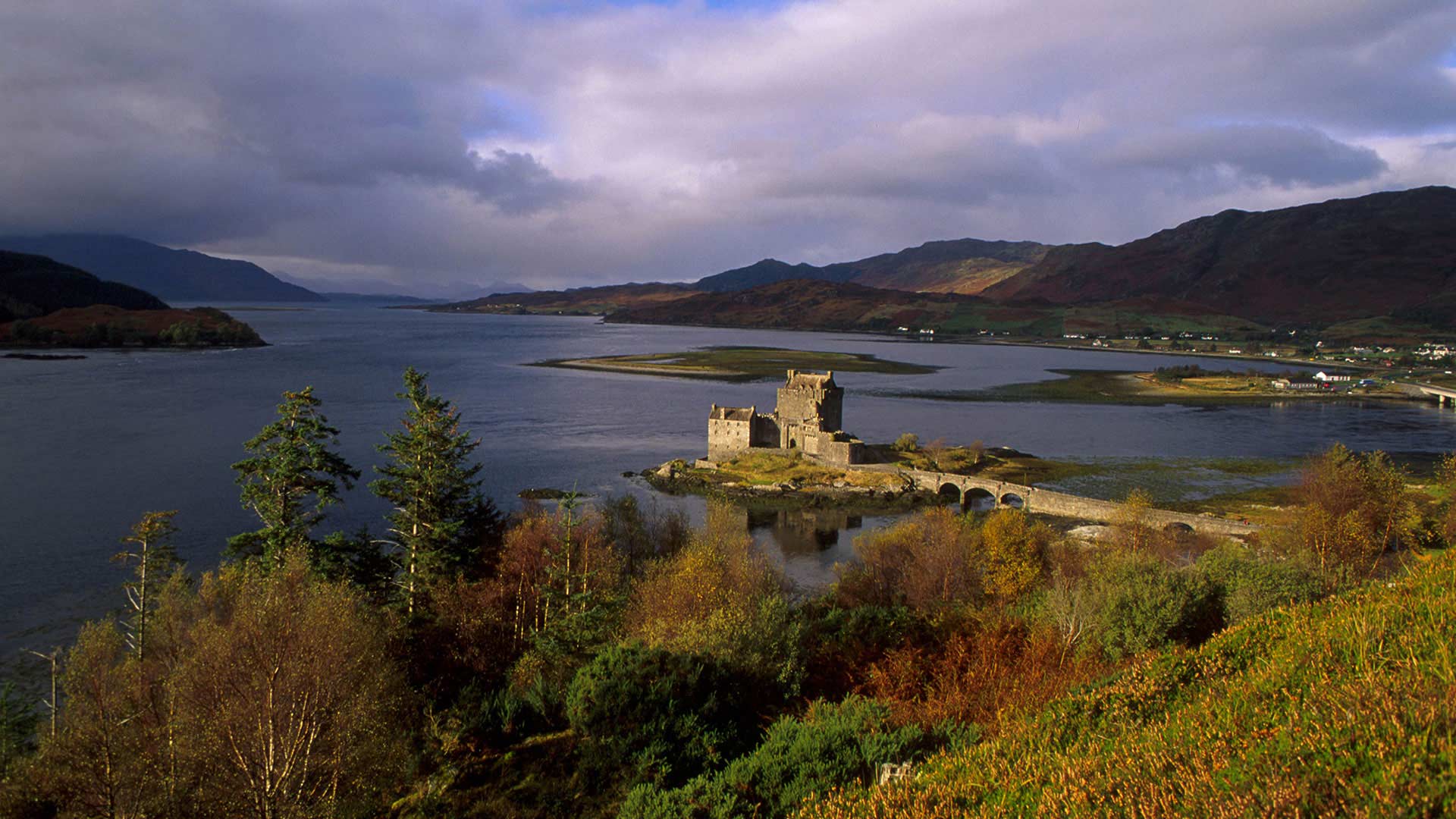
10. Eilean Donan Castle – Clan Mackenzie
On the road to the Isle of Skye, you’ll find one of Scotland’s most stunning and photogenic castles.
Perched on a small island, surrounded by lochs and mountains, Eilean Donan is simply breathtaking. A visit here also allows you to learn about the history of Clan Mackenzie, whose ties to the castle go back to the 13th century.
11. Glen Ord Distillery – Clan Mackenzie
Thomas Mackenzie established the Glen Ord whisky distillery in the Scottish Highlands in 1838. A visit here offers the perfect opportunity to learn more about Clan Mackenzie while also sampling the “water of life”.
12. Lennoxlove House – Clan Douglas
Stop at the home of the Duke of Hamilton and Marquess of Douglas and Clydesdale to experience Clan Douglas history first-hand. Lennoxlove House also showcases intriguing antiquities relating to Mary Queen of Scots, Napoleon, and Charles II.
Stroll through the grounds, admire artwork by the likes of Anthony Van Dyck and Sir Henry Raeburn, and browse the collection of historical artefacts at Lennoxlove House.
13. Isle of Mull – Clan MacLean
Throughout history, the Isle of Mull has played a special role in Clan MacLean’s identity and regular clan gatherings are still held here. Make sure to visit some of the important sites like Duart Castle, and the Old and New Breacachadh Castles on the nearby Isle of Coll.
14. Duart Castle – Clan MacLean
Duart Castle is easily one of the most breathtaking clan homes in Scotland. Clutching the rocks above the Sound of Mull, Duart Castle provides a dramatic backdrop to learn about Clan MacLean history.
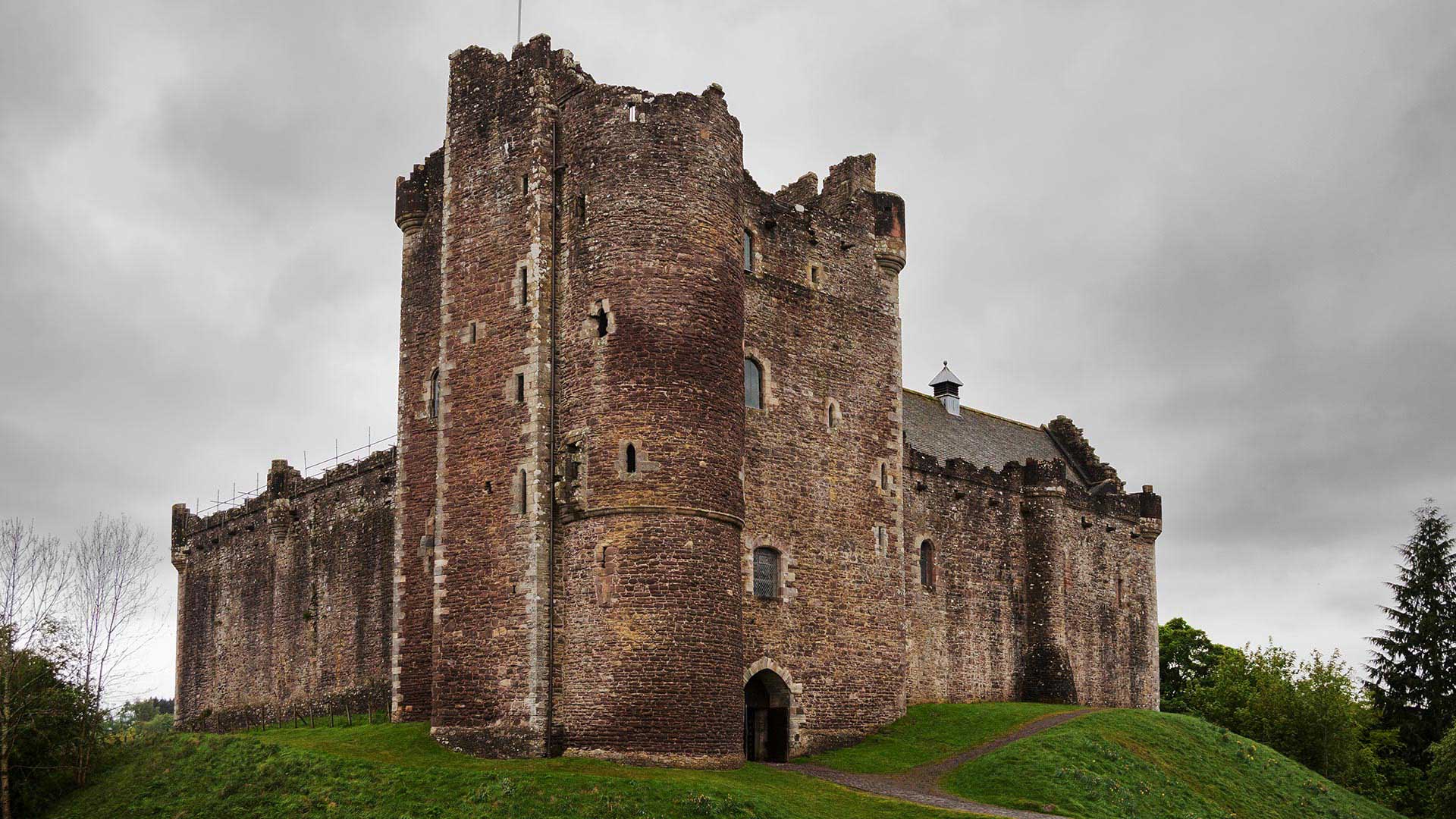
15. Doune Castle – Clan MacNab
Discover the Perthshire castle where the Clan MacNab chief was held captive following the Battle of Prestonpans in the 18th century. Doune Castle has featured in several popular films and TV shows, including Monty Python and the Holy Grail, Game of Thrones, and Outlander.
16. National Wallace Monument – Clan Wallace
Climb the 246 steps of this tower to pay tribute to Clan Wallace’s most famous member, Sir William Wallace. The National Wallace Monument marks the site of the Battle of Stirling Bridge, 1297, won by Wallace’s forces. At the top, you’ll be rewarded with stunning views across Stirling and the Trossachs.
Delve into your Scottish family history and embrace your ancestral roots by visiting clan sites in Scotland. Our Scotland itineraries can be tailored to suit you, incorporating the special places connected to your personal heritage.
You’ll have a dedicated Scotland travel consultant to design your trip. Our Scotland experts are based in Edinburgh, the Scottish capital, and will be delighted to plan your tour for you.
They’ll make sure you get the most out of your visit and will arrange all your accommodation, transport, and any particular activities you want to do. Plus, throughout your tour, you’ll have access to our 24/7 support line, so you know we are always there for you right up until you return home.
Start planning a privately guided or self-drive tour of Scotland online, or get in touch with our local travel experts.
